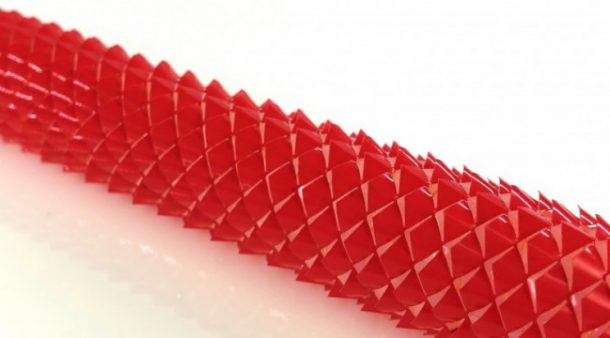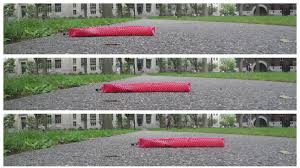A team of researchers from the Harvard John A. Paulson School of Engineering and Applied Sciences (SEAS) has manufactured a robot which can crawl like a snake and has no rigid parts in it. Kirigami, an ancient Japanese papercraft which relies on cuts to change properties of a material, has been used to make the soft robotic scales. When the robot will stretch, its flat kirigami surface will turn into a 3D-textured surface and grips the ground just like a snake.

Snakes can slither up to 14 miles per hour. They can also squeeze into a tight space, can climb trees and swim. All of this is made possible only because of their scales. When a snake starts moving, its scales grip the ground and push the body forward. This is exactly similar to crampons when they help the hikers establish footholds on the slippery ice. This is called locomotion and is helped by friction. This is made possible by the shape and positioning of the scales of the snakes.
Ahmad Rafsanjani, the first author of the paper and a postdoctoral fellow at SEAS, said, “There has been a lot of research in recent years into how to fabricate these kinds of morphable, stretchable structures. We have shown that kirigami principles can be integrated into soft robots to achieve locomotion in a way that is simpler, faster and cheaper than most previous techniques.” The researchers started making the robot skin with a simple flat plastic sheet. They have also placed in a line of centimeter-scale cuts which are created using a laser cutter. The researchers wrapped the sheet around the elastomer actuator which looked like a tube when the cuts are made once.
The actuator can expand and contract with air just like a balloon. The kirigami cuts pop-out when the actuator expands and forms a rough surface which can grip the ground. When the actuator exhales the air, the cut folds flat and push the crawler forward. The researchers successfully built an independent robot. The robot has an integrated onboard control, sensing, actuation and power supply in a tail. It has been tested crawling throughout Harvard’s campus. The team also experimented with many cut out shapes. It includes a triangle, circle, and trapezoidal shapes. The researchers found that the trapezoidal cuts gave the robot a longer stride because they resemble the shape of snake scales the most.

Rafsanjani said, “We show that the locomotive properties of these kirigami-skins can be harnessed by properly balancing the cut geometry and the actuation protocol.” Katia Bertoldi, the senior author of the paper said, “Moving forward, these components can be further optimized to improve the response of the system. We believe that our kirigami-based strategy opens avenues for the design of a new class of soft crawlers.” William and Ami Kuan Danoff Professor of Applied Mechanics, Bertoldi, said, “These all-terrain soft robots could one day travel across difficult environments for exploration, inspection, monitoring and search and rescue missions or perform complex, laparoscopic medical procedures.”


